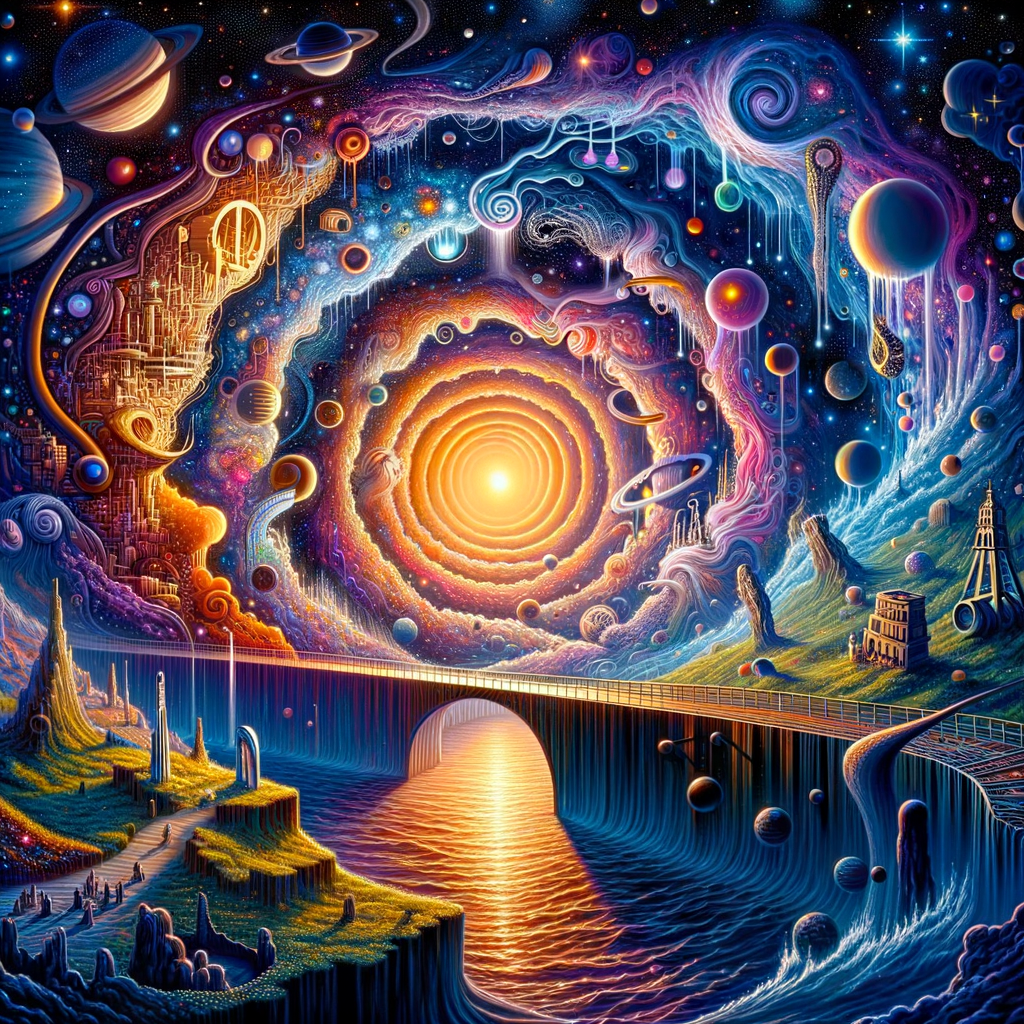The cosmic tapestry of our universe is studded with mysteries that have fascinated scientists, storytellers, and dreamers alike. Among these wonders, wormholes stand out as one of the most captivating enigma. Imagine a celestial shortcut, a bridge connecting distant corners of the cosmos, enabling not just rapid travel, but a gateway to entirely new realms of physics and possibilities. This article will take you on a whimsical yet enlightening journey through the theoretical underpinnings of wormholes and the tantalizing boundaries that constrain their cosmic potential.

Journey Through the Cosmos: Wormholes Unveiled!
Picture yourself not just gazing at the stars but actually traveling between them in the blink of an eye! This isn’t just the stuff of science fiction; the concept of wormholes offers a theoretical possibility for such interstellar voyages. A wormhole, also known as an Einstein-Rosen bridge, is a hypothetical tunnel connecting two separate points in spacetime. Conceived within the gravitational theories of Einstein’s General Relativity, these structures could, in theory, allow for instantaneous travel across vast cosmic distances, making the universe feel a lot smaller and more interconnected.
Einstein’s field equations opened the door to the idea of wormholes, but it was the imaginative work of physicist Kip Thorne that popularized them in both scientific and mainstream media. Imagine the universe as a two-dimensional sheet of paper. Now, fold that sheet in half and poke a hole through it. The hole and its connection from one side of the paper to the other is akin to a wormhole, creating a shortcut through the fabric of spacetime. Thorne’s work laid the foundation for understanding how these hypothetical passages might operate, and even how they could potentially be stabilized for use.
While the idea of wormholes is thrilling, it’s crucial to remember that they remain within the domain of theoretical physics. Despite numerous mathematical models suggesting their existence, no empirical evidence has been found. For every tantalizing theory, a corresponding set of challenges arises, making the quest to uncover wormholes akin to an interstellar treasure hunt—filled with excitement, curiosity, and the promise of astonishing discoveries.
Theoretical Models and Their Cosmic Boundaries
The theoretical models of wormholes generally fall into two main categories: traversable and non-traversable wormholes. Traversable wormholes, as the name suggests, could theoretically allow matter to pass through them. These would require the existence of “exotic matter” with negative energy density to keep the wormhole’s throat open. This exotic matter defies our current understanding of physics, existing only in the realm of speculative theories and cutting-edge quantum mechanics.
Non-traversable wormholes, on the other hand, are easier to conceptualize within the framework of General Relativity but are far less useful for travel. They might connect two different points in spacetime, but the path through them would be a one-way trip to an uncertain end. These wormholes would collapse too quickly for anything to pass through, rendering them impassable cosmic curiosities. Though less glamorous than their traversable counterparts, they still provide valuable insights into the complexities of spacetime and gravitational theory.
Despite the allure of wormholes, the limits imposed by the laws of physics are formidable. The existence of exotic matter with negative energy density remains unverified, and the immense gravitational forces involved could potentially spaghettify anything attempting passage. Moreover, quantum effects could destabilize wormholes, causing them to collapse. These boundaries highlight the challenges faced by scientists working to move wormholes from theoretical constructs to tangible cosmic highways. Yet, it’s these very limits that fuel the imagination and drive scientific inquiry, pushing the boundaries of what we know and daring us to dream of what might be possible.
As we journey through the cosmos in our minds and through our theories, wormholes remain one of the most tantalizing concepts in the lexicon of space science. These hypothetical structures stretch our understanding and challenge us to rethink the very fabric of the universe. While empirical evidence may still be beyond our reach, the exploration of wormholes serves as a testament to human curiosity and the relentless quest for knowledge. With each theoretical model and boundary tested, we inch closer to unveiling the mysteries of these cosmic enigma, reaffirming that the universe is not just a realm to be navigated, but a tapestry to be endlessly explored.









